How to setup a basic cart abandonment email
-
UncategorizedUpdatedPosted:
On this page
As the digital marketplace grows, e-commerce businesses face the challenge of cart abandonment, where shoppers add items to their carts but leave without completing the purchase.
Setting up an effective and basic cart abandonment email campaign is essential to mitigate this. This guide will walk you through creating a basic cart abandonment email setup to re-engage customers and recover lost sales.
Understanding Cart Abandonment
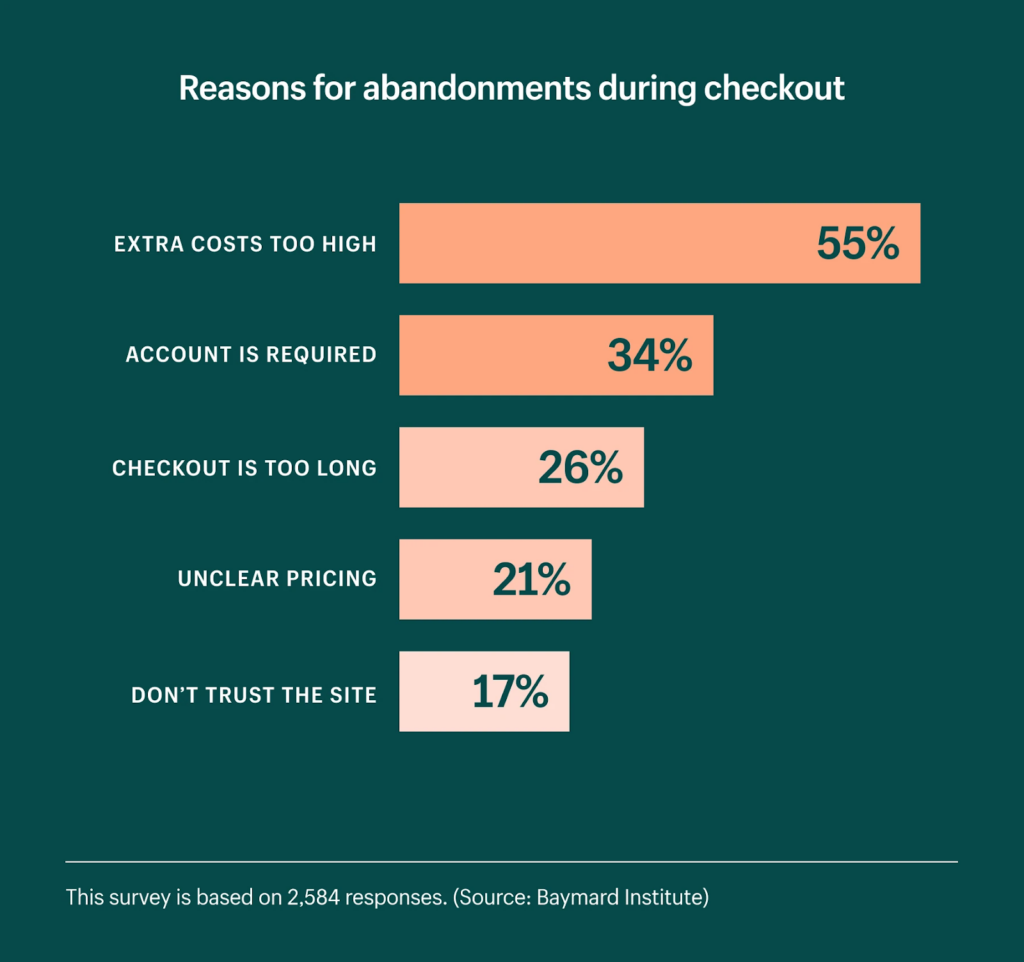 Cart abandonment is a significant challenge in the e-commerce
industry, with an average abandonment rate of around
70%. This high rate represents not just a loss of immediate sales
but also a potential decrease in customer loyalty and the
customer’s lifetime value.
Cart abandonment is a significant challenge in the e-commerce
industry, with an average abandonment rate of around
70%. This high rate represents not just a loss of immediate sales
but also a potential decrease in customer loyalty and the
customer’s lifetime value.
The reasons for cart abandonment are varied but commonly include unexpected costs, a complex checkout process, and the customer’s desire to compare prices or think over their decision.
Understanding these reasons is crucial for businesses developing effective strategies to reduce cart abandonment and recover potential sales.
One success story in tackling cart abandonment comes from TradeWinds Island Grand, a resort in Florida. TradeWinds implemented a strategy using the Navis Shopping Cart Abandonment tool to combat this issue.
It enables the automation of emails and supports the reservation sales team in follow-up efforts. The tool also offers data insights on guests’ interests and booking history, assists in data deduplication for a unified guest record, and identifies related groups for improved communication strategies.
This campaign generated an additional revenue of over $300,000 and significantly grew the size of their contact database, adding 4x the usual number of leads.
The success of TradeWinds Island Grand demonstrates how understanding the underlying causes of cart abandonment and addressing them with targeted strategies can significantly impact revenue and customer retention.
By offering timely incentives and simplifying the checkout process, businesses can effectively encourage customers to complete their transactions.
Choosing an Email Marketing Platform
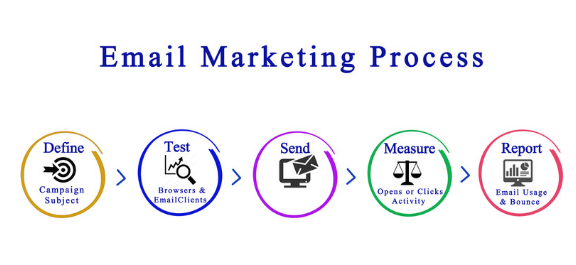 The right email marketing platform is foundational to your cart
abandonment strategy. Consider the following when choosing a
platform:
The right email marketing platform is foundational to your cart
abandonment strategy. Consider the following when choosing a
platform:
- Integration: It should seamlessly integrate with your e-commerce platform.
- Features: Look for automation, personalization, and segmentation capabilities.
- Usability: The platform should be user-friendly, allowing for easy campaign setup and management.
- Support: Ensure the platform offers strong customer support.
- Pricing: Choose a platform that offers a pricing model that scales with your business.
Setting Up Triggers
Setting up triggers for cart abandonment emails is crucial for re-engaging customers who haven’t completed a purchase.
These triggers, often configurable via your email platform, are activated when a customer’s cart remains unchecked after a specific time—commonly 24 hours, though adjustable based on particular business needs.
Analytical tools like Google Analytics or Shopify can help identify when carts are abandoned, enabling you to target specific customer segments.
With this information, you can create personalized emails through platforms like Mailchimp, carefully monitoring metrics like open and click-through rates to refine and enhance your campaign’s effectiveness.
An Example of an Effective Abandoned Cart Email
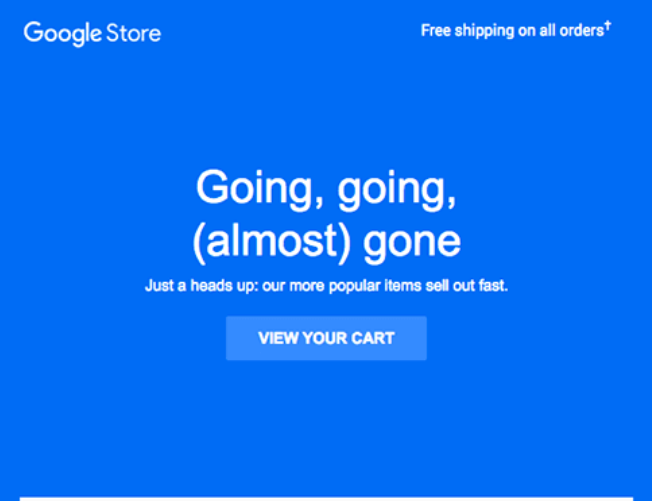
- Urgency: A great example is Google Store’s approach, which creates a clear sense of urgency, indicating that their items are in high demand and subtly addressing the fear of missing out.
- Customer Support: They offer extensive support options, making it easy for customers to reach out, and include the hours of availability, which adds a layer of convenience.
- Simplicity in Design: The email design is simple, playing into the perception that simplicity equates to high quality, a strategy effectively employed by Google Store.
Crafting Compelling Email Content
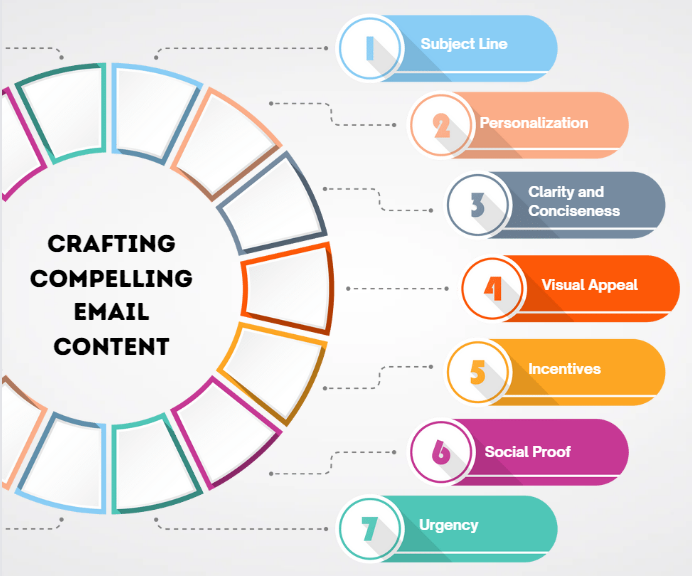
The content of your abandonment emails is pivotal in re-engaging customers. Here are critical components to crafting compelling email content:
- Subject Line: It should be attention-grabbing and reflect the email’s value proposition.
- Personalization: Address customers by name and reference specific items they’ve left in their cart.
- Clarity and Conciseness: Get to the point quickly with a clear message and call to action.
- Visual Appeal: Include high-quality images of the abandoned items and an attractive layout.
- Incentives: Offer discounts, free shipping, or other incentives to encourage completion of the purchase.
- Social Proof: Incorporate customer testimonials or ratings to build trust.
- Urgency: Create a sense of urgency with limited-time offers or low-stock warnings.
Ensure your emails are mobile-friendly, and test different designs and layouts to see what resonates best with your audience.
Timing and Frequency
The timing of your abandonment emails can significantly impact their effectiveness. As a best practice:
- First Email: Send within an hour of abandonment to catch customers while the intent to purchase is still high.
- Second Email: Follow up within 24-48 hours, providing additional information or incentives.
- Third Email: Send 3-7 days later as a final reminder, possibly with a stronger motivation.
The key is to be persistent without being intrusive, always providing value with each interaction.
Testing and Optimization
Optimization is an ongoing process. To optimize your cart abandonment email campaigns:
- Start segmenting your customers based on various criteria and plan your emails accordingly.
- Personalize your email copy with dynamic content and catchy subject lines to increase open rates.
- Send two to three emails with different approaches and CTAs to test what resonates best.
- Incorporate visual elements like product images and clear CTAs to encourage purchases, experimenting with different styles and placements.
Leverage A/B testing with email marketing tools to fine-tune subject lines, content, CTAs, email layouts, and delivery times.

Utilize platforms like Vero or Retainful for both email campaign creation and automation and for conducting A/B tests to optimize your email marketing efforts.
Continuously monitor key performance indicators like open, click-through, and conversion rates to measure success and refine your strategies for better results.
Leveraging Resources for Enhanced Cart Abandonment Strategies
E-commerce Blogs and Websites
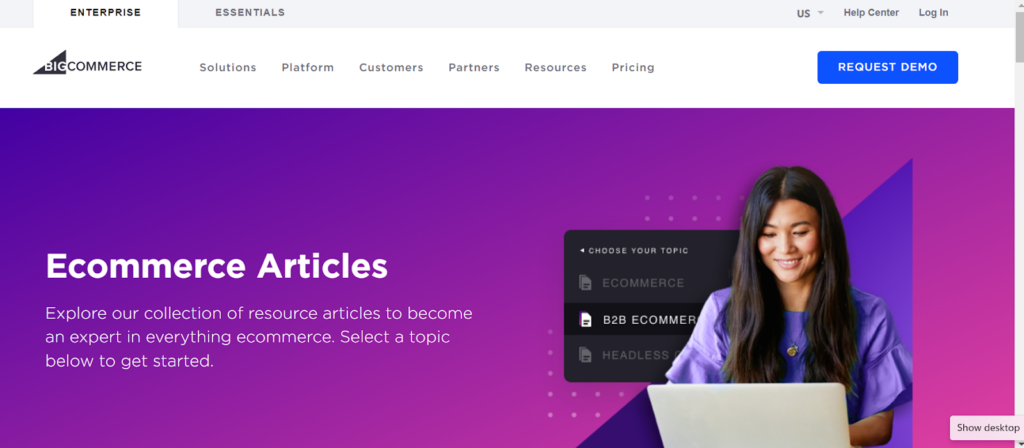 Platforms like Shopify, BigCommerce, and WooCommerce offer rich
insights and are treasure troves for best practices in e-commerce.
Platforms like Shopify, BigCommerce, and WooCommerce offer rich
insights and are treasure troves for best practices in e-commerce.
They publish articles, guides, and tutorials on various aspects of online selling, including cart abandonment strategies.
\ Following these resources, you can learn about:
- Industry trends that could affect cart abandonment rates.
- Innovative strategies other businesses have implemented.
- Updates on new features and tools you can leverage within these platforms.
Email Marketing Platform Resources
Each email marketing platform typically has a repository of resources that can guide you through setting up your cart abandonment emails. For example:
| Feature | Mailchimp | Klaviyo | Constant Contact |
| Focus | General email marketing | E-commerce email marketing | General email marketing |
| Content | Wide range of topics | E-commerce specific | Basic email best practices |
| Level of detail | Varied | Detailed and technical | Simplified |
| Additional features | Webinars, workshops | Community forum, Q&A sessions | Templates, landing pages |
| Pricing | Free plan, $9+/month | Free plan, $20+/month | No free plan, $9+/month |
| Best for | All types of businesses, smaller lists | E-commerce businesses, larger lists | Beginners, small lists |
- Mailchimp: Offers comprehensive guides on email marketing automation, including detailed instructions on setting up cart abandonment workflows.
- Klaviyo: Provides resources tailored explicitly to e-commerce businesses looking to implement advanced email marketing strategies.
- Constant Contact: Shares best practices and step-by-step guides for creating effective email campaigns.
These platforms often include case studies, video tutorials, and webinars that can provide deeper insights into the nuances of cart abandonment email campaigns.
Case Studies and Success Stories
Analyzing case studies from businesses similar to yours can offer actionable insights. They can show you:
- The different kinds of incentives that have successfully recovered abandoned carts.
- How tweaking email content or design can impact conversion rates.
- The long-term benefits of a well-structured email marketing strategy.
- Success stories serve as a motivational tool, showcasing the potential uplift in revenue and customer engagement that effective cart abandonment strategies can yield.
Industry Experts and Thought Leaders
Following thought leaders in e-commerce and email marketing can keep you at the forefront of emerging strategies. These experts often share their knowledge through
- Social Media: Platforms like LinkedIn and Twitter are where many experts share quick tips and thoughts on the latest trends.
- Blogs and Articles: Thought leaders often write in-depth articles that explore various aspects of e-commerce and provide new perspectives on old challenges.
- Podcasts and Webinars: These mediums are great for gaining insights while on the go. They can be handy for understanding the reasoning behind specific strategies and hearing direct experiences from other professionals.
Here are some personalities you might consider following for insights into e-commerce and email marketing:
- Ross Simmonds: A well-known digital marketing strategist and CEO of Foundation Marketing. He shares valuable insights on marketing and SaaS.
- Gary Vaynerchuk: A serial entrepreneur and early investor in Twitter. He’s known for his expertise in content marketing and provides educational content through his podcast and social media accounts.
- Dorie Clark: A Forbes and Harvard Business Review contributor, Dorie offers strategies for building thought leadership and community engagement.
- Chase Dimond: As the co-founder of Structured Agency, he has substantial experience in email marketing for e-commerce and often shares practical tips and insights.
- Connie Cen: The founder and CEO of Rocketeer Media, specializing in email and SMS marketing for e-commerce brands. She frequently posts about her marketing campaigns and strategies.
- Guilda Hilaire: A Senior Marketing Manager at Salesforce Marketing Cloud, is known for her frequent appearances at marketing conferences and proficiency in maximizing the potential of marketing automation tools.
- Ann Handley: A celebrated keynote speaker, best-selling author, and the brains behind MarketingProfs, a rich resource for digital marketers. IBM recognizes her as one of the key influencers in modern marketing.
- Matthew Vernhout: An expert in email deliverability, currently serves as the VP of Deliverability at Netcore Cloud. He established the EmailKarma blog in 2007 and is well-versed in Canada’s anti-spam law (CASL). Matthew has co-authored a book on the subject, founded the Canadian Email Summit, and is actively involved with the BIMI Group as a communications chairperson.
These experts can provide a steady stream of trends, strategies, and insights in e-commerce and email marketing.
Learning from Your Audience
Pay attention to the power of direct feedback. Engaging with your customers through surveys or feedback can reveal why they abandon carts. This first-hand information can be the most potent resource for effectively tailoring email campaigns.
By leveraging these varied resources, you’ll comprehensively understand cart abandonment issues and how to tackle them.
Each resource offers unique insights that, when combined, can significantly enhance the effectiveness of your cart abandonment emails, leading to higher conversion rates and a better understanding of your customer base.
Maximizing Revenue and Loyalty
Setting up an effective cart abandonment email campaign involves understanding why customers abandon carts, choosing the right email platform, setting appropriate triggers, crafting persuasive emails, and optimizing the timing and frequency of your messages.
By testing different strategies and staying informed through industry resources, you can turn abandoned carts into completed sales and foster stronger customer relationships.
Remember, the goal of your emails is not just to recover lost sales but to build trust and encourage repeat business, turning what could have been lost customers into loyal fans.

